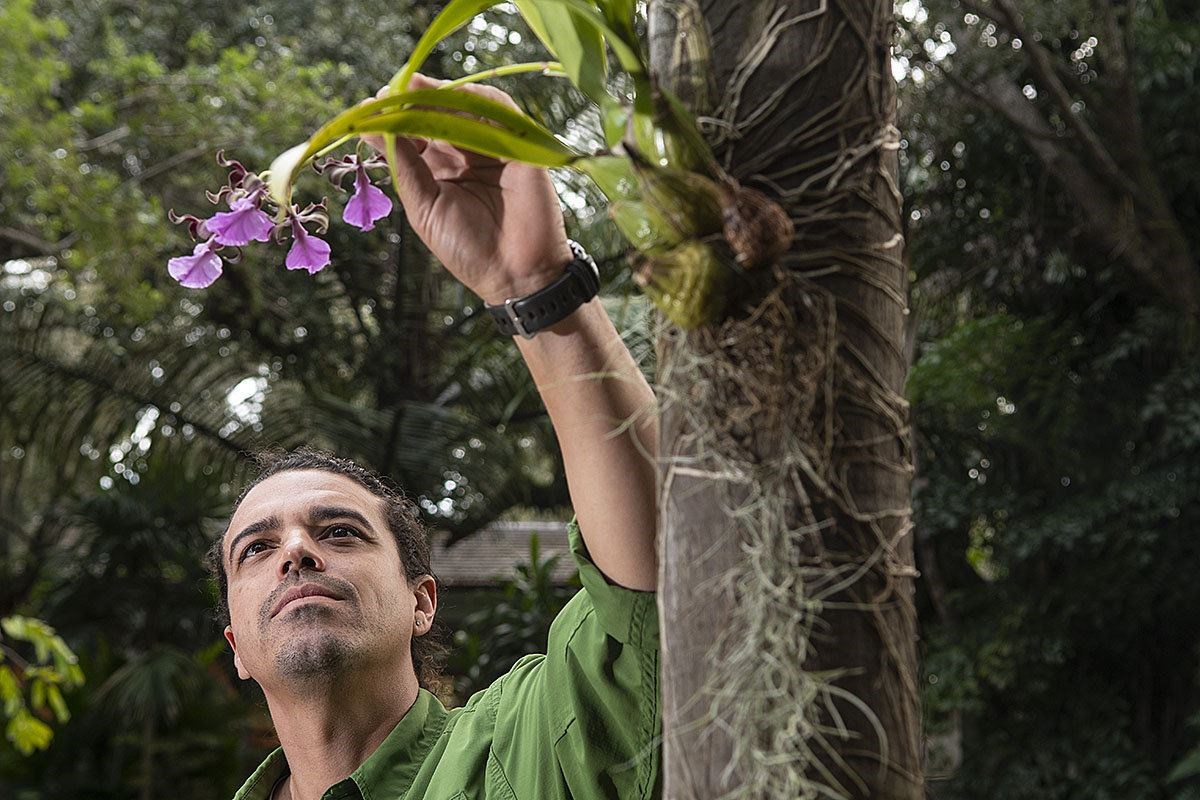Reprinted with permission from The Christian Science Monitor
Can planting endangered plants in urban settings help heal the disconnect between humans and nature? Conservationists in Miami are trying a fresh approach to both landscaping and saving native plants. - Yvonne
FEBRUARY 14, 2019 - People often relate to nature as something wild and separate from society. They are either a threat to nature or have to protect it. But what if the solution to some environmental problems lies in merging humanity and nature? Some conservation biologists are trying a fresh approach to reintroducing endangered plant species: integrating them into urban areas.
 Jason Downing, orchid biologist at the Fairchild Tropical Botanic Garden, examines orchids Jan. 27 in Coral Gables, Fla. The Million Orchid Project reintroduces eight species of native orchids (not shown) into South Florida’s urban landscapes.Alfredo Sosa/StaffOne such project is the Million Orchid Project at Fairchild Tropical Botanic Garden in Coral Gables, Fla. Scientists and volunteers are propagating rare, threatened orchids that are native to South Florida in a lab there and then planting them out in school yards, on hospital campuses, in city parks, and even alongside busy roads.
Jason Downing, orchid biologist at the Fairchild Tropical Botanic Garden, examines orchids Jan. 27 in Coral Gables, Fla. The Million Orchid Project reintroduces eight species of native orchids (not shown) into South Florida’s urban landscapes.Alfredo Sosa/StaffOne such project is the Million Orchid Project at Fairchild Tropical Botanic Garden in Coral Gables, Fla. Scientists and volunteers are propagating rare, threatened orchids that are native to South Florida in a lab there and then planting them out in school yards, on hospital campuses, in city parks, and even alongside busy roads.
“With habitat loss and climate change, we’re seeing our natural areas shrinking by the day,” says Jason Downing, the orchid biologist at Fairchild who is spearheading the project. “So it’s going to be critical that the future generations are clever and inventive and innovative in the ways that we try to preserve biodiversity. And one of those ways is working in less natural areas, in semi-natural areas and urban areas.”
Page created on 2/15/2019 2:08:53 AM
Last edited 2/15/2019 2:38:40 AM
